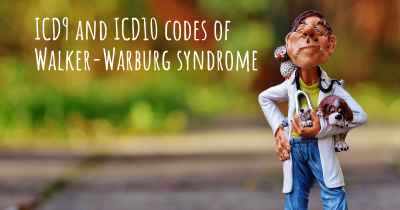Which are the symptoms of Walker-Warburg syndrome?
See the worst symptoms of affected by Walker-Warburg syndrome here

Walker-Warburg syndrome, also known as cerebroocular dysplasia-muscular dystrophy syndrome, is a rare and severe genetic disorder that primarily affects the development of the brain, eyes, and muscles. It belongs to a group of conditions called congenital muscular dystrophies, which are characterized by muscle weakness and wasting that is present from birth.
Symptoms:
The symptoms of Walker-Warburg syndrome can vary in severity and may present differently in each affected individual. However, there are several key features that are commonly observed:
- Brain Abnormalities: Individuals with Walker-Warburg syndrome often have structural abnormalities in the brain, such as a smooth brain surface (lissencephaly) or a reduced number of folds in the brain (pachygyria). These abnormalities can lead to developmental delays, intellectual disability, and seizures.
- Eye Abnormalities: The syndrome is characterized by a range of eye abnormalities, including malformations of the retina, optic nerve, and other structures. These abnormalities can cause vision impairment or blindness.
- Muscle Weakness: Muscle weakness and hypotonia (low muscle tone) are common features of Walker-Warburg syndrome. Affected individuals may have difficulty with motor skills, such as sitting, standing, or walking. The muscle weakness can also affect the muscles involved in breathing and swallowing, leading to respiratory and feeding difficulties.
- Craniofacial Abnormalities: Some individuals with Walker-Warburg syndrome may have craniofacial abnormalities, including a small head (microcephaly), a high forehead, a prominent back portion of the skull (occipital prominence), and a small jaw (micrognathia).
- Heart Defects: Certain heart abnormalities, such as ventricular septal defects (holes in the heart's walls) or abnormalities of the heart valves, can be present in individuals with Walker-Warburg syndrome.
- Kidney and Urinary Tract Abnormalities: Some affected individuals may have structural abnormalities in the kidneys or urinary tract, which can lead to urinary problems or kidney dysfunction.
- Other Features: Additional features that may be seen in individuals with Walker-Warburg syndrome include joint contractures (limited range of motion in joints), cleft lip and/or palate, hearing loss, and abnormalities of the genitalia.
Diagnosis and Treatment:
Diagnosing Walker-Warburg syndrome typically involves a combination of clinical evaluation, imaging studies (such as brain MRI), genetic testing, and specialized eye examinations. Prenatal diagnosis may be possible through genetic testing if there is a family history of the condition or if certain ultrasound findings suggest the possibility of Walker-Warburg syndrome.
Unfortunately, there is currently no cure for Walker-Warburg syndrome. Treatment is primarily focused on managing the symptoms and providing supportive care. This may involve a multidisciplinary approach with various specialists, including neurologists, ophthalmologists, orthopedic surgeons, physical and occupational therapists, and other healthcare professionals. Treatment strategies may include physical therapy to improve mobility and muscle strength, assistive devices to aid with mobility, medications to manage seizures or other symptoms, and interventions to address specific complications, such as heart defects or urinary tract abnormalities.
Prognosis:
The prognosis for individuals with Walker-Warburg syndrome is generally poor, and life expectancy is often significantly reduced. The severity of the symptoms and the rate of disease progression can vary, but most affected individuals have significant developmental delays, intellectual disability, and severe muscle weakness. Complications related to brain abnormalities, respiratory difficulties, and other organ involvement can further impact the prognosis. Early intervention, comprehensive medical care, and supportive therapies can help improve the quality of life for affected individuals and their families.








